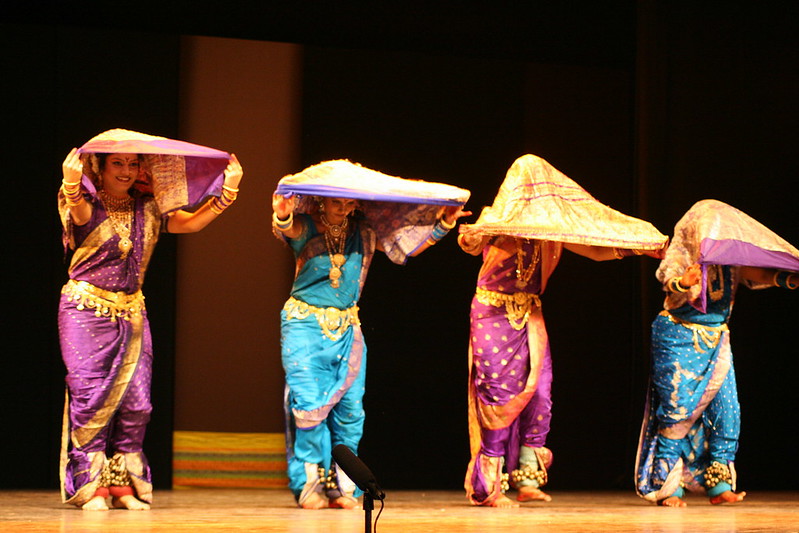Lavani is a popular folk dance of Maharastra. It is a combination of music and dance. The nature of Lavani dance is mostly sensual but it also deals with other social and religious issues. The songs include social issues and political satires. According to its genre, Lavani has been divided into various parts.

The name Lavani has been derived from the word ‘Lavanya’ which means beauty. Lavani covers topics such as sexual union between the couple, the wife’s menstruation, love, the wife’s bidding farewell to a soldier, etc. When Lavani comes to sensual depiction it sometimes outsteps social decency while depicting sexual passion.
Lavani has two distinct performances, one Baithakichi Lavani and another Phadachi Lavani. In Phadachi Lavani a Lavani performance is given on stage in public. In Baithakichi Lavani a Lavani performance is given in private chambers between a selected crowd.
Lavani Dance Performance
Women usually perform as main dancers but sometimes male dancers participate in Lavani too. Male dancers are led by the main performer and called nat.
History of Lavani Dance
Initially, Lavani was performed by shepherds and dhangars of the Solapur district of Maharashtra. The dance was performed to entertain soldiers going to war or away from their homeland.
During the rule of the Peshawari Dynasty, Lavani was the most popular dance form. It was performed on stage and in the private chambers of royal members.
There are Lavani songs that talk about the birth of dhangara and the shepherds’ deity. These songs connect Lavani with religious connotations.
Musical instruments
Dholki is the main instrument played during a Lavani performance. Dancers need to dance with the rapid beating of the dholki as they perform. With time Lavani has seen some changes, now it is performed on recorded music and live music that uses various instruments.
Costumes
The costume that female dancers wear is called Nauvari because it’s nine yards long. The saree is longer but more comfortable than regular sarees.
Women dancers also wear heavy jewelry such as bangles, Kamar-band, anklets, earrings, etc. They tie up their hair instead of in a bun called ambada in Marathi.
Even though the dance started as a tool for soldiers’ enjoyment, it has established itself as a well-respected and popular dance form all over India. Bollywood celebrity Madhuri Dixit considers her roots in Maharastra. She once mentioned that when she performs Lavani she feels like she is home.
